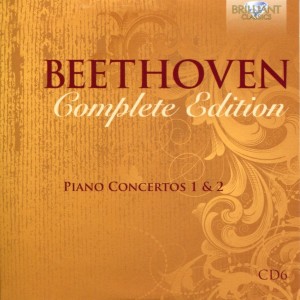 Some parts of Beethoven’s Piano Concert No. 1 in C Op. 15 remind me of Chopin – dreamy, ethereal, and very pretty.
Some parts of Beethoven’s Piano Concert No. 1 in C Op. 15 remind me of Chopin – dreamy, ethereal, and very pretty.
Other parts, remind me of something Glenn Gould would play – a dramatic flurry of notes that astound for their speed and complexity, the musical equivalent of one of those tour buses that winds its way along narrow mountain roads with one wheel hanging over the precipice.
There’s also a bit of Rachmaninoff‘s brazen complexity in this music. It reminds me of the movie Shine in which pianist David Helfgott (played by Geoffrey Rush) suffers a mental breakdown during a competition at which he plays the “Rach 3” (Rachmaninoff’s 3rd Concerto).
And that’s just in the first movement (“Allegro con brio”).
Now’s a good time to bring back the link to Wikipedia’s Tempo and Mood Markings entry.
Movement II (“Largo”) brings it down, retards the pace a bit, makes it more ponderous, give listeners a chance to recover from the con-brio onslaught of Movement I.
Movement III (“Rondo: Allegro scherzando”) ramps it back up again. Its tempo and mood markings indicate this is to be played briskly and playfully. And it is that. In spades.
I hate to sound like a moron. But I had no idea Beethoven was this gifted. These compositions rock me back in my chair. I’m astounded.
I keep waiting to find a favorite. But they’ve all been favorites. I’d listen to everything I’ve heard so far again. And again. It’s perfect music asbackground for writing. Or for active listening.
Piano Concerto No. 1 in C Op. 15, according to its entry on Wikipedia, was
written during 1796 and 1797. Dedicated to his pupil Countess Anna Louise Barbara (“Babette”) Keglevics, its first performance was in Prague in 1798, with Beethoven himself playing the piano.
Although this was Beethoven’s first piano concerto to be published, it was, in fact, his third attempt at the genre, following an unpublished piano concerto in E-flat major (not to be confused with Beethoven’s more famous “Emperor” concerto, also in E-flat) and the Piano Concerto No. 2, published after Piano Concerto No. 1 (in 1801) but composed almost ten years earlier.
Beethoven was was 27 when he completed this piano concerto. He was 28 when it premiered.
Beethoven’s Piano Concert No. 2 in B Flat Op. 19, according to its entry on Wikipedia,
became an important display piece for the young Beethoven as he sought to establish himself after moving from Bonn to Vienna. He was the soloist at its premiere on 29 March 1795, at Vienna’s Burgtheater in a concert marking his public debut. (Prior to that, he had performed only in the private salons of the Viennese nobility.) While the work as a whole is very much in the concerto style of Mozart, there is a sense of drama and contrast that would be present in many of Beethoven’s later works. Beethoven himself apparently did not rate this work particularly highly, remarking to the publisher Franz Anton Hoffmeister that, along with the Piano Concerto No. 1, it was “not one of my best.” The version that he premiered in 1795 is the version that is performed and recorded today.
Although Movement I is designated “Allegro con brio” as was Movement I of Piano Concerto No. 1, this isn’t as “con brio” as the latter. Most of it is a little less briskly paced, more like an adagio. But who am I to quibble? And to whom would I quibble, anyway? About 11 or so minutes into its 14-minute length it gets very brio, indeed, with the pianist’s fingers flying at supersonic speed.
And that unreal tempo is again showcased in Movement III (“Rondo: Molto allegro”).
Piano Concerto No. 2 in B Flat premiered on 29 March 1795. Beethoven was 25.
The performers on today’s CD are:
Yefim Bronfman piano
Tonhalle Orchestra Zurich
David Zinman conductor
These two piano concertos are exquisite pieces of music, covering a wide range of emotions and tempi, performed to perfection. In fact, if Yefim Bronfman ever tours near Michigan, I am so there. I’d love to see him perform live.
